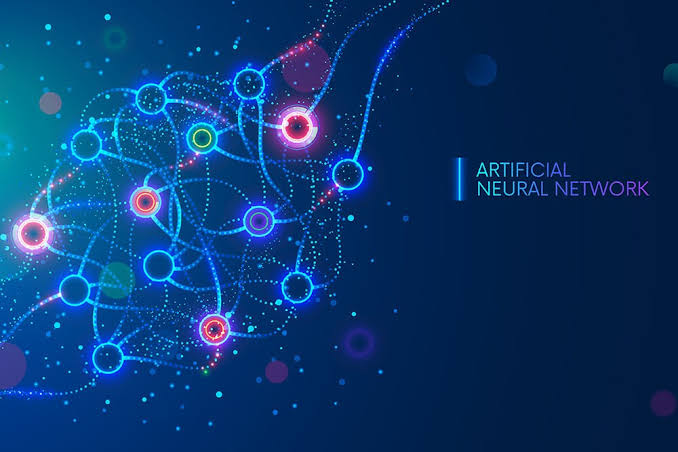Explore the transformative impact of neural networks in artificial intelligence (AI), from their foundational principles and diverse architectures to applications across industries such as healthcare, autonomous vehicles, and finance. Discover how these advanced computational models are shaping the future of intelligent systems and driving innovations in machine learning and deep learning technologies.
Neural networks represent a cornerstone in the field of artificial intelligence (AI), embodying a paradigm that mimics the human brain's neural structure to process complex data and make decisions. This exploration delves into the foundational principles, architecture, training methods, applications, and future directions of neural networks, highlighting their pivotal role in advancing AI capabilities across diverse domains.
Understanding Neural Networks
At its essence, a neural network is a computational model inspired by the biological neural networks of the human brain. It comprises interconnected nodes, or neurons, organized in layers. Each neuron processes input data, performs computations using learned weights and biases, and generates an output signal that serves as input to subsequent layers or as the final prediction.
Key Components of Neural Networks
1. Neurons: Neurons are fundamental units that receive input signals, apply weights and biases, and produce an output signal through an activation function. These activations determine the neuron's contribution to the network's final output.
2. Layers: Neural networks consist of multiple layers:
- Input Layer: Receives initial input data and passes it to the next layer.
- Hidden Layers: Intermediate layers between the input and output layers, where computations occur through interconnected neurons.
- Output Layer: Produces the final prediction or classification based on the computations performed in previous layers.
3. Weights and Biases: Neural networks learn from data by adjusting weights and biases associated with connections between neurons. These adjustments optimize the network's ability to make accurate predictions or classifications during training.
Architecture and Types of Neural Networks
Neural networks can vary in architecture and complexity, tailored to specific tasks and data characteristics:
1. Feedforward Neural Networks: The simplest form where data flows in one direction—from input to output—without cycles or feedback loops. They are effective for tasks like image classification and regression.
2. Convolutional Neural Networks (CNNs): Specialized for processing grid-like data, such as images and videos, CNNs use convolutional layers to detect patterns and spatial relationships within input data, achieving state-of-the-art performance in computer vision tasks.
3. Recurrent Neural Networks (RNNs): Designed to handle sequential data with temporal dependencies, RNNs maintain an internal state that allows them to process inputs of varying lengths and predict sequences. They excel in tasks like speech recognition, language modeling, and time series analysis.
4. Long Short-Term Memory Networks (LSTMs) and Gated Recurrent Units (GRUs): Architectural variants of RNNs equipped with memory cells and gating mechanisms to address the vanishing gradient problem, enabling them to capture long-term dependencies in sequential data.
Training and Learning in Neural Networks
Training neural networks involves optimizing model parameters (weights and biases) to minimize prediction errors using labeled training data:
1. Backpropagation: An iterative optimization technique where prediction errors (loss) are propagated backward through the network to adjust weights and biases, improving the model's accuracy over successive epochs (training iterations).
2. Gradient Descent: A foundational optimization algorithm used in conjunction with backpropagation to adjust weights and biases incrementally, moving towards the optimal configuration that minimizes the loss function.
Applications of Neural Networks
Neural networks have revolutionized various industries and applications, demonstrating their versatility and effectiveness in solving complex problems:
1. Image and Speech Recognition: CNNs and RNNs power advanced systems for image classification, object detection, speech recognition, and natural language processing tasks like language translation and sentiment analysis.
2. Autonomous Vehicles: Neural networks enable autonomous vehicles to perceive and interpret their surroundings using sensors and cameras, making real-time decisions for navigation, obstacle avoidance, and route planning.
3. Healthcare and Biomedical Research: Neural networks aid in medical image analysis, disease diagnosis, personalized treatment recommendations, drug discovery, and genomic sequencing, contributing to advancements in healthcare delivery and patient care.
4. Finance and Trading: Neural networks analyze financial data, predict market trends, optimize trading strategies, and detect anomalies or fraudulent activities in banking and financial transactions.
Future Directions and Innovations in Neural Networks
Looking ahead, several emerging trends are shaping the future of neural networks and AI:
1. Deep Reinforcement Learning: Integrating reinforcement learning with deep neural networks enables agents to learn optimal behavior through interaction with environments, advancing applications in robotics, gaming, and decision-making systems.
2. Explainable AI and Interpretability: Addressing the "black-box" nature of deep learning models by developing techniques for explaining and understanding neural network decisions, enhancing transparency and trust in AI applications.
3. Federated Learning and Edge Computing: Federated learning techniques allow multiple decentralized devices to collaboratively train a shared model while preserving data privacy. Edge computing leverages neural networks on local devices for real-time processing and reduced latency.
4. Neuromorphic Computing: Drawing inspiration from biological neural networks, neuromorphic computing aims to design hardware architectures that mimic the brain's parallelism and efficiency, potentially revolutionizing AI performance and energy efficiency.
Conclusion
In conclusion, neural networks represent a foundational technology driving the rapid evolution of artificial intelligence. From their biological inspiration to diverse architectural innovations and applications across industries, neural networks continue to push the boundaries of AI capabilities. As researchers explore new architectures, training methods, and applications, neural networks are poised to lead AI advancements into a future where intelligent systems seamlessly integrate into everyday life, revolutionizing how we work, communicate, and interact with the world around us.
